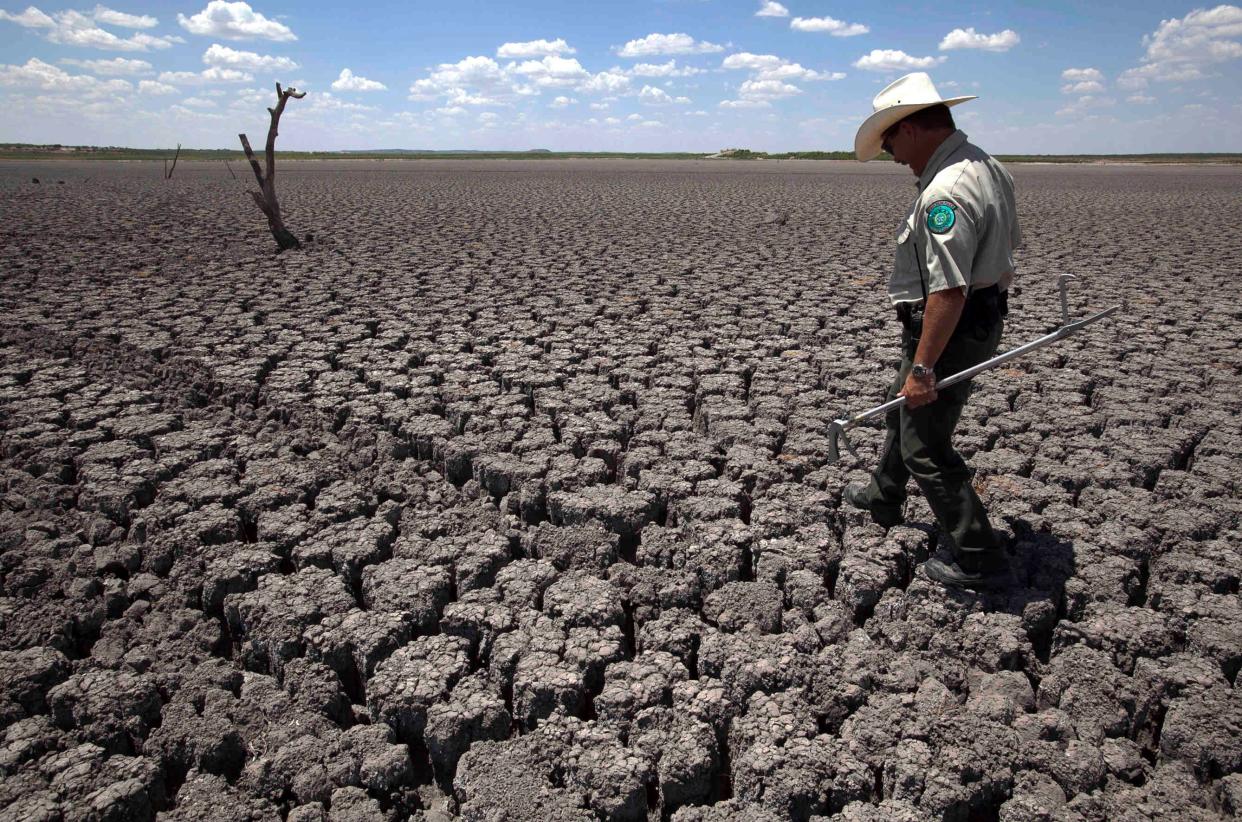Megadroughts to plague the Southwest as climate warms, study says

They're coming back.
Megadroughts – defined as intense droughts that last for decades or longer – once plagued the Desert Southwest. In fact, from the 9th to the 15th centuries, at least a dozen medieval megadroughts occurred across the region, scientists said.
Now, a study suggests that because of the drying influence of climate change, megadroughts could return to the region.
Megadroughts are defined more by their duration than their severity. They are extreme dry spells that can last for a decade or longer, according to the National Oceanic and Atmospheric Administration.
They've parched the West, including present-day California, long before Europeans settled the region in the 1800s.
Most of the USA's droughts of the past century, even the infamous 1930s Dust Bowl that forced migrations of Oklahomans and others from the Plains, "were exceeded in severity and duration multiple times by droughts during the preceding 2,000 years," the National Climate Assessment said.
The difference now, of course, is the Western USA is home to more than 70 million people who weren't here for the previous medieval megadroughts. The implications are far more daunting.
How do scientists know how wet or dry it was centuries ago? Though no weather records exist before the late 1800s, scientists can examine paleoclimatic "proxy data," such as tree rings and lake sediment, to find out how much – or little – rain fell hundreds or even thousands of years ago.
If scientists can understand why megadroughts happened in the past, it can help better predict whether, how and where they might happen in the future, the new study said.
"In our paper, we present the first comprehensive theory for what caused historical megadroughts, which happened during the medieval period but not after about the year 1600," said study lead author Nathan Stieger of Columbia University's Lamont-Doherty Earth Observatory. "We find that they were caused by severe and frequent La Niñas, a warm Atlantic Ocean, and a net increase in energy from the sun."
The study also suggests an increasing risk of future megadroughts in the American Southwest because of climate change.
Why is this? During the time of the medieval megadroughts, increased energy from the sun was, of course, caused by natural climate variability. But today, the world is experiencing increased dryness in many locations because of human-caused climate change, which is setting the stage for an increased possibility of megadroughts in the future through greater dryness, researchers say.
“Because you increase the baseline (dryness), in the future when you have a big La Niña, or several of them in a row, it could lead to megadroughts in the American West,” Steiger said.
An expert not involved with the study praised the work: "What’s new here is they are really putting the pieces together in a way that hasn’t been done before,” Connie Woodhouse, a climate scientist at the University of Arizona, told National Geographic.
The study was published Wednesday in the peer-reviewed journal Science Advances.
This article originally appeared on USA TODAY: Megadroughts predicted to return to Southwest due to climate change

